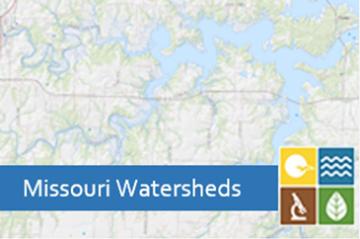
The goal of the federal Clean Water Act, found in U.S. Code 33 U.S.C. §1251 et seq., is "to restore and maintain the chemical, physical, and biological integrity of the Nation's waters." Water quality restoration and protection requires a watershed approach to ensure healthy waters for drinking, recreation and other uses. Since water resource problems are most often tied to land use in a given watershed, they often cut across political jurisdictions. By examining water resource issues on a watershed basis, instead of along political boundaries, problems can be assessed in relationship to their sources so the causes can be addressed in the most effective manner.
Watershed Prioritizing
In 2012, the department launched a statewide watershed planning effort to strategically address local water resource issues. Missouri's 66 eight-digit Hydrologic Unit Code (HUC8) subbasins were ranked using a series of criteria. Considered criteria in each watershed include: known and potential sources of impairment, pollutant categories, planning and assessment capabilities and ability to share resources. Other individual watershed priorities may include available water quality monitoring data, physical watershed assessments, pollutant load reduction studies, modeling information, funding and the potential for leveraging and partnering opportunities. This ranking process allowed the state to prioritize watersheds for planning and implementation. Planning helps prioritize impaired waters and watersheds on a federal and state level.
Plan Development
A watershed planning approach is community-based and provides a framework for stakeholders to more effectively prioritize concerns and coordinate and integrate available programs and resources to address their water resource problems. The watershed planning and implementation efforts are locally-led by a single entity (e.g. watershed groups, local governments) who coordinates and partners with others in the watershed to develop a holistic approach for protecting and improving the water resources. Through these partnerships, landowners, communities, industries and local leaders work together to share information and set priorities for a watershed.
The department provides support for watershed planning through several programs:
- Nonpoint Source Management Program - A program that engages citizen organizations, federal, state and local governments, as well as universities and other stakeholders to plan for and implement nonpoint source pollution control practices and monitor for improvements to water quality.
- Source Water Protection Program - A program that supports local efforts to protect drinking water sources, while offering public water systems an opportunity to learn about a broad range of approaches to protect their water supply. While a local source water protection plan may include an entire watershed, they are often targeted to specific areas close to the water source. Watershed protection planners are encouraged to collaborate with public water systems operating within their area of interest to enhance the effectiveness of the larger watershed protection strategy.
